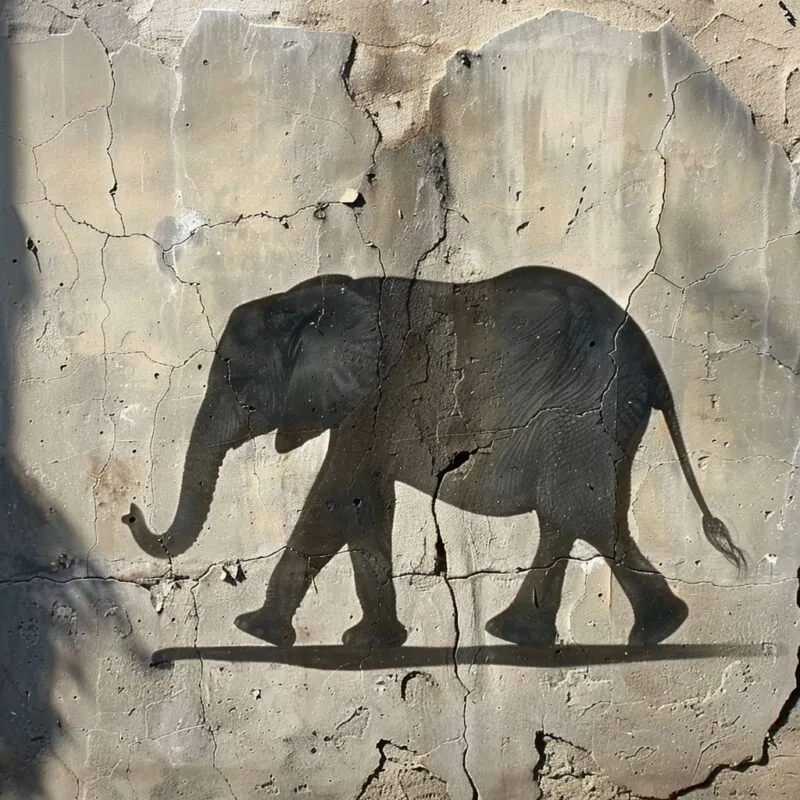Luck is an interesting idea that varies across cultures. Around the world, people believe in different symbols that bring good fortune. These Cultural Luck Symbols have historical and cultural importance, reflecting the beliefs and traditions of the societies that cherish them.
We’ll look at some popular luck symbols, from the four-leaf clover in Ireland to the elephant in India. Each symbol has a unique story and meaning that reveals how people seek and celebrate luck in diverse ways.
Cultural Luck Symbols and Meanings
| Symbol | Meaning |
|---|---|
| Four-Leaf Clover | Faith, hope, love, and luck. Symbolizes good fortune and protection, especially in Ireland. |
| Horseshoe | Strength and protection. Often hung above doorways to ward off bad spirits and bring good luck. |
| Elephant | Luck, wisdom, strength, and the removal of obstacles. In some cultures, elephants also represent long life and power. |
| Maneki-Neko | Also known as “beckoning cat,” it symbolizes wealth and prosperity. Different colors have various meanings such as purity and wealth. |
| Nazar | An eye-shaped amulet believed to ward off negative energy and envy. The deep blue color symbolizes protection. |
| Dreamcatcher | Traditionally used by Native Americans for protection and to filter out bad dreams. Hung above beds to promote restful sleep and ward off nightmares. |
| Rabbit’s Foot | Believed to bring good fortune in matters of money and love, originating from ancient Celtic and African traditions. |
| Bamboo | Symbolizes luck, strength, resilience, prosperity, and success. Lucky bamboo plants are often given as gifts. |
| Acorn | Represents luck, potential, growth, strength, and prosperity. Carrying an acorn is thought to bring good luck and a long life. |
9. Four-Leaf Clover
The four-leaf clover is a classic symbol of good luck, especially in Western cultures. It comes from Ireland and is a rare version of the common three-leaf clover. Each of the four leaves represents something different – faith, hope, love, and luck.
Finding one is special because they are so hard to find. The four-leaf clover is closely tied to St. Patrick’s Day and Irish folklore, symbolizing good fortune and protection.
8. Horseshoe
The horseshoe is a well-known symbol of good luck, especially in Europe and North America. It traces back to ancient Greece, where people highly valued horses, and their shoes represented strength and protection. The crescent shape of the horseshoe also connects to the moon, a long-standing symbol of fertility and good fortune.
Today, people often hang horseshoes above their doorways to ward off bad spirits and bring good luck. Some believe the horseshoe should be hung with the ends pointed up to hold the luck in, while others think it should hang with the ends pointing down to let the luck pour over them.
7. Elephant
In many Asian cultures, the elephant represents luck, wisdom, and strength. In India, the elephant-headed god Ganesha is known for removing obstacles and bringing good fortune. Statues and images of elephants with their trunks raised are believed to attract positive energy and good luck.
Elephants also symbolize memory and intelligence, reflecting their respected status in these societies. Elephants are not just lucky in Asia – they are also considered symbols of long life and power in some African cultures.
6. Maneki-Neko
The Maneki-Neko, or “beckoning cat,” is a popular symbol of luck in Japan. Often seen in shops and restaurants, this small cat figurine is believed to bring good fortune and attract customers. The Maneki-Neko is typically shown with one paw raised in a beckoning gesture, inviting wealth and prosperity.
Different colors and styles of Maneki-Neko have various meanings; for example, a white cat symbolizes purity, while a gold cat represents wealth. The origins of the Maneki-Neko are rooted in Japanese folklore, with several legends explaining its lucky properties.
5. Nazar
The Nazar is an eye-shaped amulet from Middle Eastern and Mediterranean cultures that is believed to ward off negative energy and envy. The deep blue color symbolizes protection. People wear Nazar jewelry or place them in homes and cars to bring good luck.
4. Dreamcatcher
The dreamcatcher originates from Native American traditions as a symbol of protection and good fortune. Traditionally made with a willow hoop and featuring an intricate web, dreamcatchers are thought to filter out bad dreams.
They are often hung above beds to promote restful sleep and ward off nightmares. More about Dreamcatcher and Nazar you can read here.
3. Rabbit’s Foot
The rabbit’s foot is a well-known good luck charm in Western cultures, originating from ancient Celtic and African traditions that viewed rabbits as magical creatures. Carrying a rabbit’s foot, especially the left hind foot, is believed to bring good fortune in matters of money and love.
2. Bamboo
In Asian cultures, bamboo symbolizes luck, strength, and resilience. Its rapid growth and ability to thrive make it a symbol of prosperity and success. Lucky bamboo plants are often given as gifts, and the number of stalks holds specific meanings like happiness, wealth, and harmony.
1. Acorn
The acorn is a symbol of luck and potential, representing the growth, strength, and prosperity of the mighty oak tree. In Norse mythology, acorns were associated with the god Thor and believed to protect homes. Carrying an acorn is thought to bring good luck and a long life in various European cultures.
Conclusion
Cultural Luck Symbols provide a fascinating glimpse into the beliefs and traditions that shape societies. From the four-leaf clover in Ireland to the Nazar in the Middle East, each symbol carries unique meanings and stories that generations have passed down.
These symbols reflect the universal human desire for protection, prosperity, and happiness. By appreciating these symbols, we can better understand the rich cultural heritage that surrounds us and the diverse ways people around the world seek to attract good fortune.















